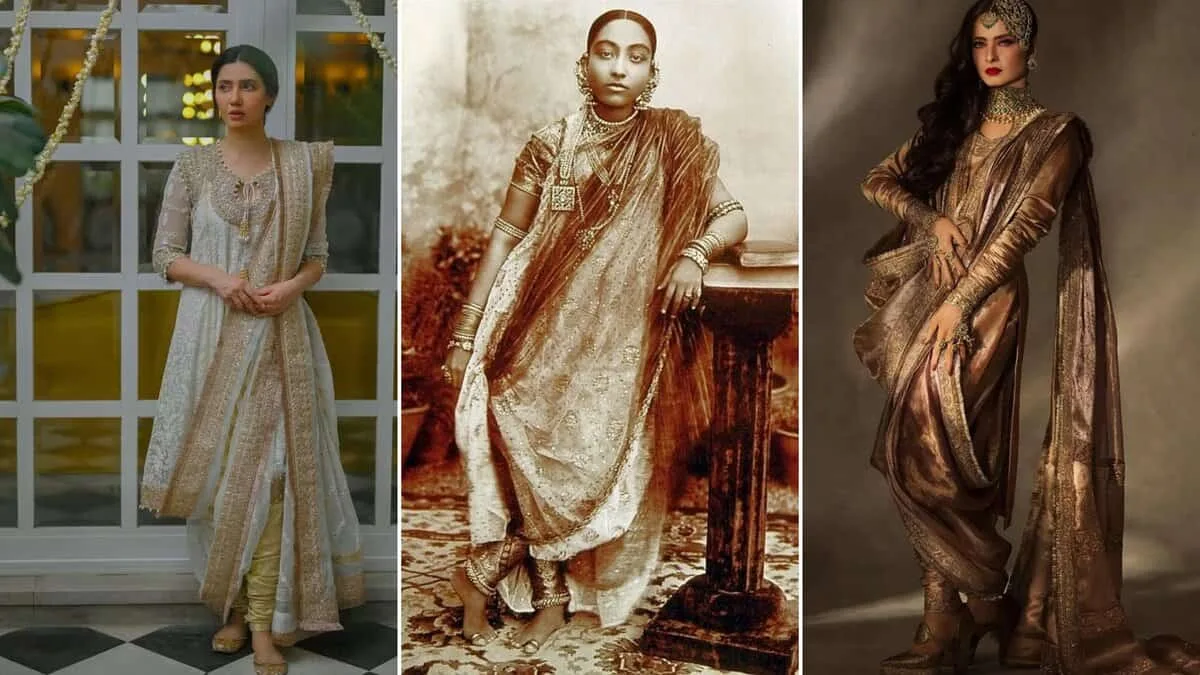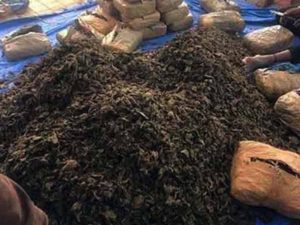In the rich cultural fabric of Hyderabad, few bridal ensembles are as iconic as the Khada Dupatta. Rooted in the traditions of Hyderabadi Muslim families, it is more than just an outfit; it is a symbol of royal elegance, heritage, and timeless beauty.
With its graceful silhouette and rich embroidery, this regal ensemble is increasingly being embraced at weddings and special occasions by people from diverse backgrounds, celebrating its timeless beauty and royal legacy.
A glimpse into Khada Dupatta’s history
The origin of the Khada Dupatta dates back to the 17th century, when Mughal Empress Noor Jahan brought Persian and Turkish influences into court fashion, invited skilled Turkish and Persian craftsmen to craft exquisite noble dresses.
These garments soon became a staple among noblewomen. With the passage of time, this noble attire underwent a transformation and took on its distinct style, known today as the Khada Dupatta.
These styles made their way south with the rise of the Asaf Jahi dynasty, where Hyderabadi Begums embraced and evolved the look. This unique ensemble combined elements of a Kurtani, a jacket, and a 6-yard dupatta with intrinsic work, thanks to the modifications introduced by the Begums of Nizam in Hyderabad.
Despite its noble origins, the Khada Dupatta transcended social barriers and found favour among common women of different ethnic backgrounds in the state of Hyderabad during the pre-independence era.
The word “Khada” means “standing” and “Dupatta” means “veil.” It refers to the unique way the six-yard dupatta is draped upright behind the bride, creating a curtain-like effect that exudes regal grace. Traditionally worn with a straight kurta, churidar, and sometimes a koti (waistcoat), this three-piece attire became synonymous with royal weddings in Hyderabad.
Craftsmanship and symbolism
A true Khada Dupatta is a masterpiece of craftsmanship. It is made from luxurious fabrics like silk, net, or chiffon, and richly embroidered with zardozi, gota, or kundan work. The dupatta itself features elaborate designs floral vines, jaal patterns, and metallic borders reflecting the opulence of the Nizami era. The attire is not only a visual delight but also a symbol of purity, family pride, and cultural continuity.
Modern brides and celebrity influence
Despite changing trends, the Khada Dupatta has remained a beloved choice for Hyderabadi brides. Over the decades, its design has evolved from heavy Banarasi silks in the past to lighter nets and modern embellishments today.
Famous faces like Sania Mirza, Rekha, Mahira Khan, Nita Ambani and Shobhita Dhulipala revived interest in this traditional attire, while social media and bridal fashion influencers continue to popularize it across the country.
Local designers in Hyderabad are now reinterpreting it with contemporary flair, without losing its traditional roots.
Where tradition lives on
Markets like Laad Bazaar and Charminar are home to artisans who still craft these stunning ensembles. Many families also preserve heirloom pieces, worn by generations of women during weddings and special occasions.
A living legacy
The Khada Dupatta is more than a bridal outfit; it’s a celebration of Hyderabadi tehzeeb, royalty, and feminine grace. As trends come and go, this timeless ensemble continues to stand tall just like the brides who wear it.







